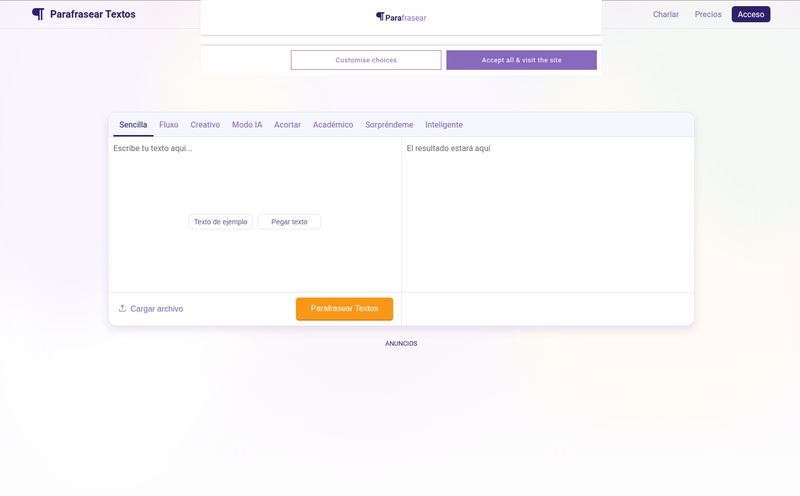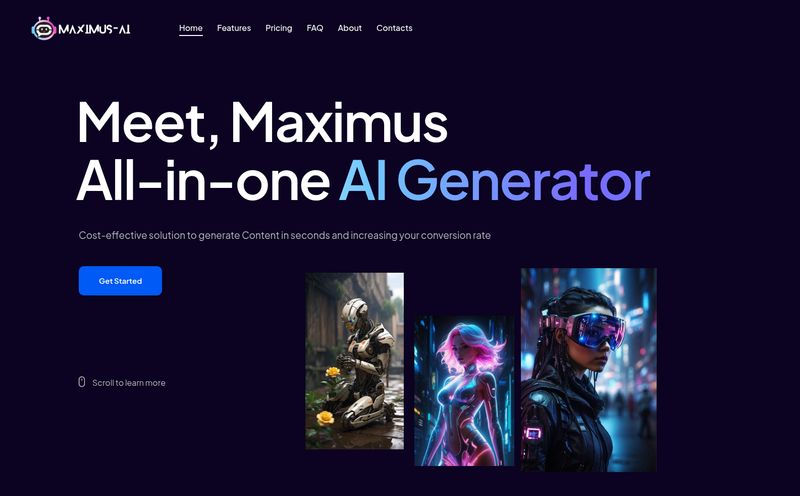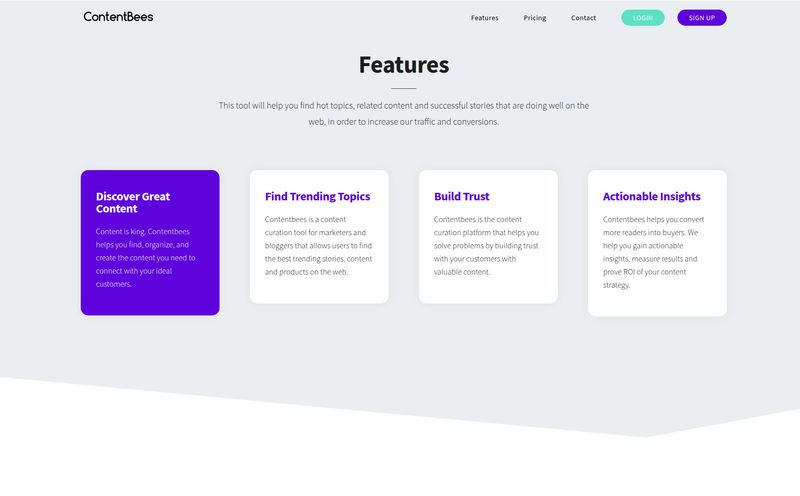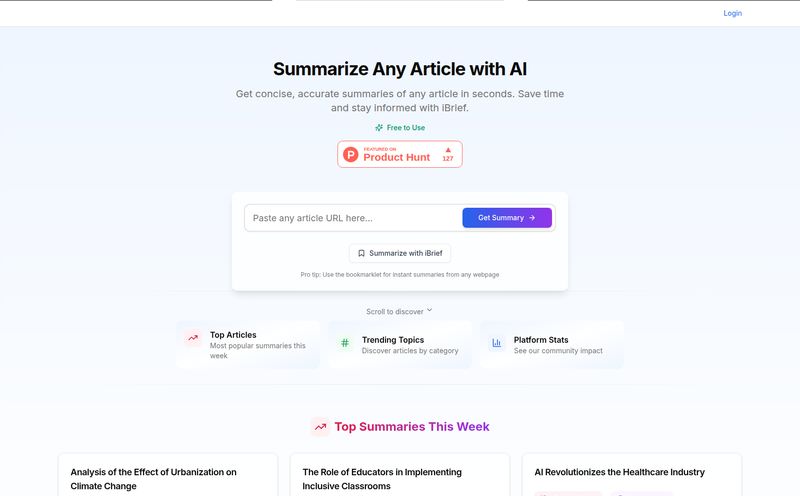If I showed you my browser window right now, you'd probably stage an intervention. It’s a chaotic graveyard of good intentions—dozens of tabs, each holding a dense research paper, a long-form industry report, or a think piece I swore I’d get to. It's the modern condition for anyone who's curious or has a job that requires knowing things. We're all drowning in information, desperately trying to keep our heads above the digital deluge.
For years, my process was a clunky, caffeine-fueled mess of copy-pasting, manual highlighting, and juggling a separate document for notes. It was slow. It was tedious. And frankly, a lot of valuable insight got lost in the shuffle. I’ve tried a bunch of tools promising to fix this, but they often felt like putting a band-aid on a firehose wound. Until I stumbled upon a little Chrome extension that actually felt different. Enter Scholarcy.
So, What Exactly Is Scholarcy?
At its core, Scholarcy is an AI-powered browser extension designed to read and summarize articles, reports, and book chapters for you. But calling it just a “summarizer” feels like calling a Swiss Army knife just a knife. It’s more like a pocket-sized research assistant that lives in your browser, ready to spring into action.
You’re on a page with a 10,000-word academic paper full of jargon that would make your eyes glaze over. You click the little Scholarcy icon. In seconds—and I mean, like, seconds—it breaks the whole thing down. It doesn’t just give you a condensed paragraph. It creates what it calls an interactive “summary flashcard.” It pulls out the key highlights, the main arguments, the abstract, and even finds the page numbers for figures and tables. It’s pretty magical.
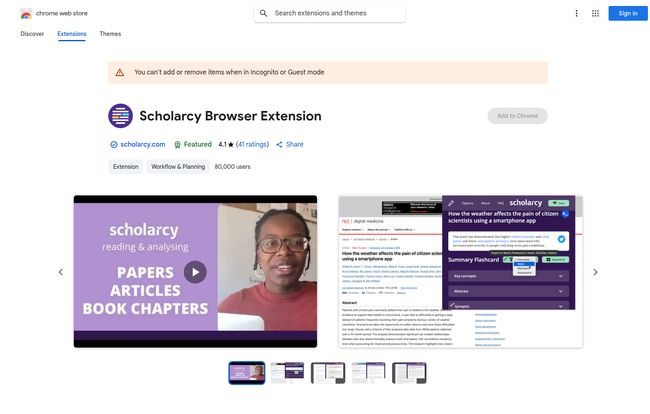
Visit Scholarcy
Drowning in Tabs? How Scholarcy Throws You a Lifeline
The biggest immediate win? Time. The extension claims it can cut down your reading time by over 70%, and honestly, that doesn't feel like an exaggeration. Instead of spending 45 minutes wrestling with a dense paper just to decide if it's relevant, I can spend two minutes with the Scholarcy summary and get the gist. It’s a filter for the noise.
More Than Just a TL;DR Machine
I’ve used other TL;DR tools, and they're fine for a quick take on a news article. But Scholarcy is built for heavier lifting. One of its standout features is how it handles sources. It extracts all the references from the article and provides links to the original sources. Manually building a bibliography is one of the most soul-crushing parts of any research project, and this feature alone is a massive quality-of-life improvement. It even generates a background reading list based on the paper's citations. It’s like the AI is saying, “Oh, you liked this? You might also like these…” which is brilliant for discovery.
The Interactive Flashcard System is a Game Changer
This is what really got me. The summary isn’t a static block of text. It's a structured, interactive card. You can click to jump straight to a specific section in the original article, export your highlights, or save the entire card to your personal Scholarcy Library (more on that later). This transforms reading from a passive activity into an active one. I found myself retaining more information because I was engaging with it in this structured way, not just scanning endless paragraphs. It's fantastic for students, academics, or even just market researchers trying to build a knowledge base.
Let's Talk Money: The Scholarcy Pricing Breakdown
Alright, let’s get to the brass tacks. Is this thing going to cost you an arm and a leg? The good news is, no. There’s a genuinely useful free option, which I always appreciate. It gives you a real feel for the tool before you have to pull out your wallet.
| Plan | Price | Key Features |
|---|---|---|
| Free Article Summarizer | $0 / forever | Limit of 10 summaries, import various file formats, export flashcards one at a time. |
| Monthly Plan | SGD 13.99 / month | Unlimited summaries, enhanced summaries, save flashcards, notes & highlighting, collections, literature matrix, one-click bibliographies. |
| Yearly Plan | SGD 120.00 / year | Same as monthly but you save about SGD 47 a year. That's a few fancy coffees. |
The Free Tier: A Generous Taster
The free plan is perfect for casual use. If you need to summarize an article once or twice a week, it’s all you need. The limit of 10 summaries is the main catch, but it gives you more than enough runway to see if the tool fits your workflow. You can still use the core summarization magic and export flashcards, which is pretty generous.
Going Pro: Is the Subscription Worth It?
For me? Yes. For a heavy user—a student working on a dissertation, a journalist, a patent lawyer, an analyst—the paid plan is a no-brainer. The unlimited summaries are the main draw, but the real power comes from the Scholarcy Library. This is your personal, searchable knowledge base. Every flashcard you save is stored there. You can organize them into collections, add your own notes, and build a powerful second brain dedicated to your research. The Literature Matrix and one-click bibliographies are just icing on a very productive cake. At around $10 a month (if you go yearly), the time it saves me pays for itself almost instantly.
My Honest Take: The Good, The Bad, and The... Scholarly
No tool is perfect, right? After using Scholarcy for a few months, here's my unfiltered take.
The good is obvious: it saves an incredible amount of time, it genuinely helps in understanding complex topics, and it makes organizing reserach a breeze. It’s like a superpower for anyone who has to read a lot. The way it pulls out figures, tables, and creates a background reading list is something I haven't seen done this well elsewhere.
The 'bad'? The limitations on the free version are noticeable if you're a power user. That 10-summary limit comes up faster than you'd think once you get into the habit of using it. And of course, some of the best features, like the personal library and unlimited exports, are behind the paywall. But that’s a pretty standard business model, so it’s hard to fault them for it.
It's an amazing tool for tackling dense academic or technical texts. For a quick take on a pop-culture blog? It might be overkill, but it still works. Its real strength lies in its academic and professional DNA.
Frequently Asked Questions about Scholarcy
1. Who is Scholarcy for?
It's ideal for students (especially post-grads), academics, researchers, journalists, librarians, and any professional who needs to quickly digest dense reports, white papers, or scholarly articles. If your job involves literature reviews, you need this.
2. Is the AI summary reliable?
In my experience, it’s very reliable for extracting the core arguments and data. It’s not meant to replace reading the paper entirely, but to give you a highly accurate, structured overview so you can decide if you need to read the whole thing. It’s an evaluation tool, and a very good one.
3. How does it compare to other summarizers like TLDR This?
Tools like TLDR This are great for general web articles. Scholarcy is specialized for research. Its ability to parse academic structures, extract references, and link to figures is what sets it apart. It’s less about a short paragraph summary and more about creating a structured, data-rich study guide for the document.
4. Can I use it on any website?
Pretty much! It works on PDFs, Word documents, and web pages. As long as it can access the text, it can do its thing. I've used it on everything from open-access journals to news sites with long investigative pieces.
Final Thoughts: Is Scholarcy Worth Installing?
Absolutely. For the low, low price of a few clicks, the free version of the Scholarcy browser extension is a phenomenal tool to have in your back pocket. It's one of those rare extensions that you'll actually use regularly.
If you're a serious researcher, the paid subscription is, in my opinion, a small price to pay for the sheer amount of time and mental energy it frees up. It's not just another gadget; it's a genuine improvement to the painful process of modern research. It brings a little bit of order to the beautiful chaos of the internet, and for that, my 49 open tabs are truly grateful.
